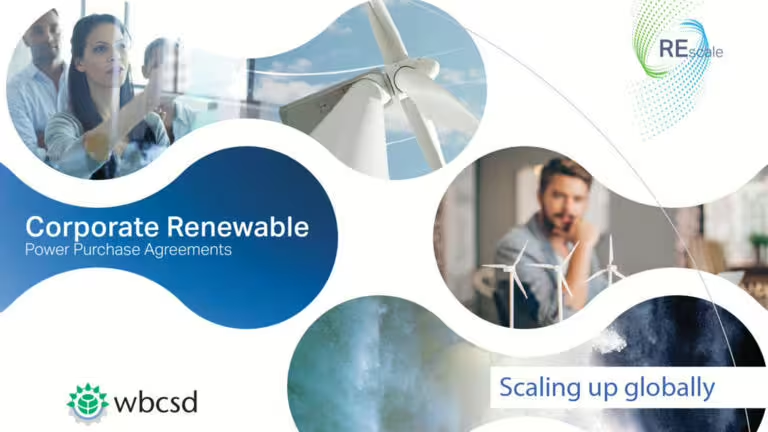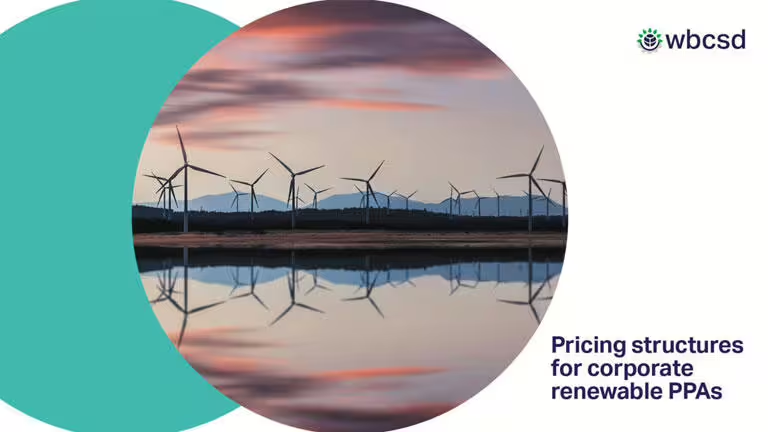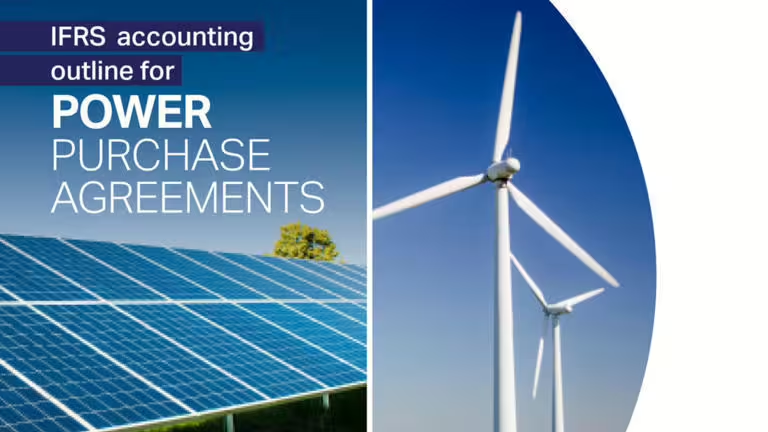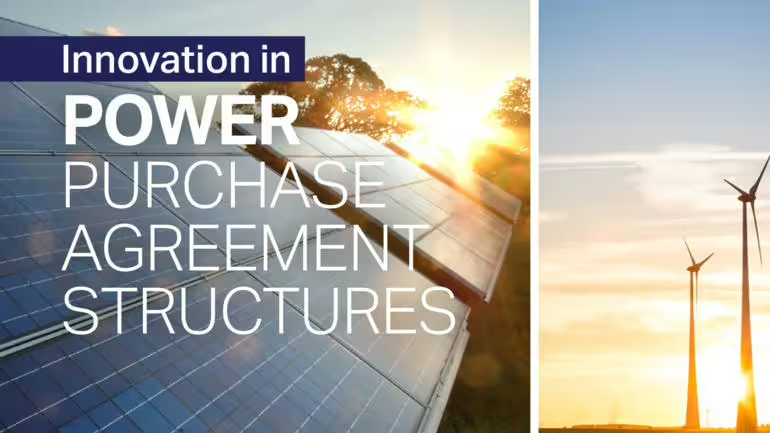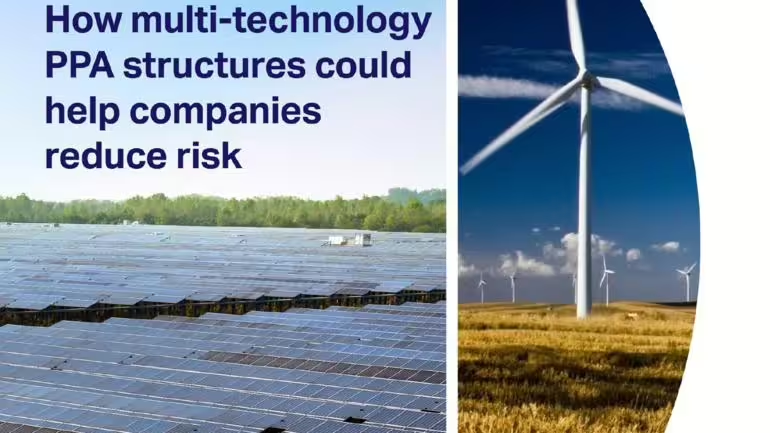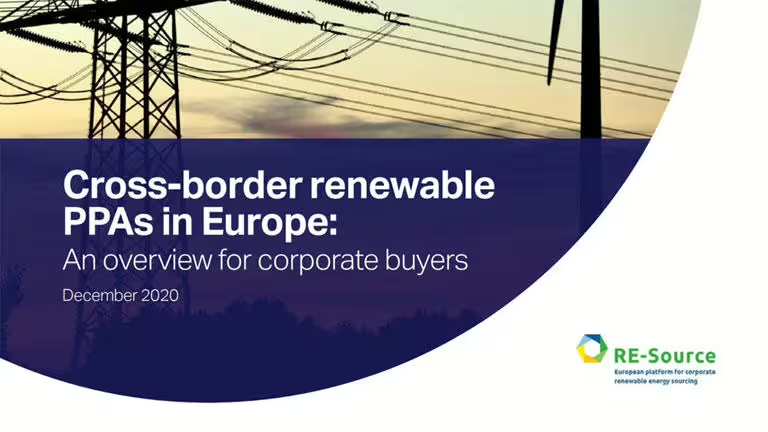How can companies adopt
PPAs to decarbonize power consumption?
Since 2015, WBCSD has worked to increase the understanding and use of corporate renewable Power Purchase Agreements (PPAs)
We have created a valuable and pragmatic suite of guidance to help companies navigate their individual journey toward renewable power via PPAs. This guidance is based on the challenges that companies are facing when negotiating PPAs, for example: identifying the financial and reporting impact of signing PPAs, understanding various pricing structures for PPAs and finding the most suitable project. Leading corporate buyers are nowadays additionally wondering how to use their procurement decisions to reduce not only negative impact on the environment but also on nature and society.
Overview:
WBCSD has released a number of resources to enhance companies’ overall understanding of renewable PPAs. These resources offer a good starting point for companies looking to procure renewable power through PPAs.
Where to start with understanding the basics of corporate renewable PPAs?
This report guides companies through the process of procuring renewable power via PPAs.
Procuring renewable power reduces companies’ carbon footprint, showcases leadership and mitigates energy procurement costs and risks.
The business case is based on:
- Economics – long-term electricity affordability and price visibility;
- Sustainability – reduced carbon emissions and progress towards renewables targets; and
- Leadership – recognition for renewable electricity achievements and climate leadership.
This report helps companies navigate barriers and seize the opportunities PPAs offer. It takes a global approach, highlighting countries with potential for corporate renewables such as Chile, Argentina and India.
#Corporate PPA overview, Drivers, Challenges and solutions, Bankability

What are the various pricing structures for corporate PPAs and their associated risks?
This report aims to help businesses benefit from PPAs by providing an outline of the various pricing structures available, and commentary on their respective risk impacts, regional variations and settlement considerations to help businesses understand feasible options that are suitable for them.
As PPAs continue to grow in popularity, a variety of pricing structures are being used to reflect the balance of risks and benefits between parties in different geographies.
They include:
- Fixed, escalation & indexation
- Floating price, discount to market with caps and floors
- Collar and reverse collar (collar, reverse collar (VPPA only)
- Hybrid structures
- Clawback
This report is meant for corporate buyers to better understand the introductory concepts before receiving professional advice on their applicability to individual projects.
#Pricing structures, Risk impacts, Regional variations, Settlement considerations
What are the potential financial accounting and reporting treatments for corporate PPAs?
This guide This guide helps corporate buyers:
- Understand the International Financial Reporting Standards (IFRS) as they relate to corporate PPAs; and
- Identify the potential accounting and financial reporting consequences of entering a PPA.
Corporate PPAs are often extensive contracts and include a myriad of clauses and advanced price mechanisms that can increase accounting and financial reporting complexity.
This paper mainly aims to help accounting professionals and off-takers address issues surrounding accounting for corporate power purchase agreements. The main tool is a decision tree which illustrates the possible accounting treatments for PPA contracts. The decision tree helps determine what contractual elements must be evaluated in order to establish the most appropriate accounting of a PPA.
#Accounting guidance for PPAs, Accounting impact, Corporate buyers
Innovations in PPAs:
Continuing innovation in contract terms and conditions is crucial to increasing the number of corporate renewable PPAs globally. WBCSD has released a number of resources to keep companies up to date with innovations in the renewable PPA space and enable easy adoption.
- Innovation in Power Purchase Agreement Structures
- How multi-technology PPAs could help company reduce risk
- Cross-border renewable PPAs in Europe
- What’s next for companies procuring renewable power? Navigating the transition to a sustainable power system (2023)
How to overcome the challenges of volume and generation profile risk and manage contractual complexities?
This guide helps companies set up innovative corporate renewable PPAs. The objective of this report is to identify further challenges that corporate buyers have come across as the corporate PPA market has grown and evolved in existing and new markets and jurisdictions. It is a snapshot of current market practices and an identifier of future growth and innovation.
- Volume and shape risk, for example through proxy revenue swaps and energy storage
- Managing lender expectations, for example through debt refinancing and buyer’s clubs
- Managing complexity and time to complete deals, for example through contract standardisation and creditworthy aggregators to bundle risks
A better understanding of challenges and innovations will accelerate deployment of corporate renewable PPAs in mature markets and assist the successful development in new markets.
#Corporate PPA features, New risks associated with PPAs, Development risk, Performance risk, Volume risk, Profile risk
How to firm-up the renewable power generation profile?
This paper investigates if and how multi-technology PPAs could offer benefits to developers and/or corporate buyers by mitigating balancing, shape or profile and volume risks commonly associated with PPAs. The goal of this paper is to support continuous innovation in the way companies purchase renewable power for their operations.
The research finds that a well-structured portfolio of projects and technologies can offer a firmer renewable generation profile compared to a single technology.
A variety of technology combinations are possible for corporate renewable multi-technology PPAs. This paper is limited to technologies with a variable generation profile: wind and solar PV.
#Risks and benefits associated with cross-border PPAs, Guarantee of Origin treatment, Virtual PPAs

How can companies access the benefits and mitigate the risks of cross-border PPAs?
This report examines a specific offsite PPA structure that emerged in the European Single Market: the cross-border PPA (so called XB PPA).
In a XB PPA, a corporate buyer purchases renewable electricity (and usually the accompanying guarantees of origin – GOs) generated outside of the country of consumption, via a PPA. XB PPAs are becoming increasingly popular as countries seek to meet their energy needs and reduce carbon emissions. They offer a way for countries to access affordable and reliable energy resources, while also promoting regional cooperation and integration in the energy sector.
XB PPAs can take two forms:
- Virtual/financial XB PPAs – a financially settled PPA, where a physical network connection between the generation asset(s) and the operational load is not required
- Physical/direct XB PPAs – a PPA where there is a physical grid network connection between the generation asset and the load of the corporate buyer, where the electricity delivered under the PPA is sleeved through an energy service provider
The objective of this report is to help corporate buyers understand the technicalities of XB PPAs by providing a balanced view of the risks and opportunities that the XB PPA structure can provide.
#Risks and benefits associated with cross-border PPAs, Guarantee of Origin treatment, Virtual PPAs
What are the new leadership approaches for companies to take in renewable power procurement?
This report aims to present the successes achieved in corporate renewable power procurement while examining what the transition to a sustainable power system means for the ambitious leadership of the future.
An increasingly ambitious sustainability agenda and the evolving dynamics of power market operations necessitate a rethink of how companies procure, consume and invest in renewable power. As a result, the benchmark for what constitutes positive impact for corporate renewable power procurement this decade is diversifying into a new range of leadership approaches rather than one single metric that is suitable for all businesses.
This report sets out six power procurement approaches that go beyond the worthy goal of adding renewable power capacity to the grid and that companies can use to respond to the risks and opportunities that transition to a sustainable power system presents. These include considering time factors, grid stability and impact on society and nature in the power procurement decisions that companies make.
